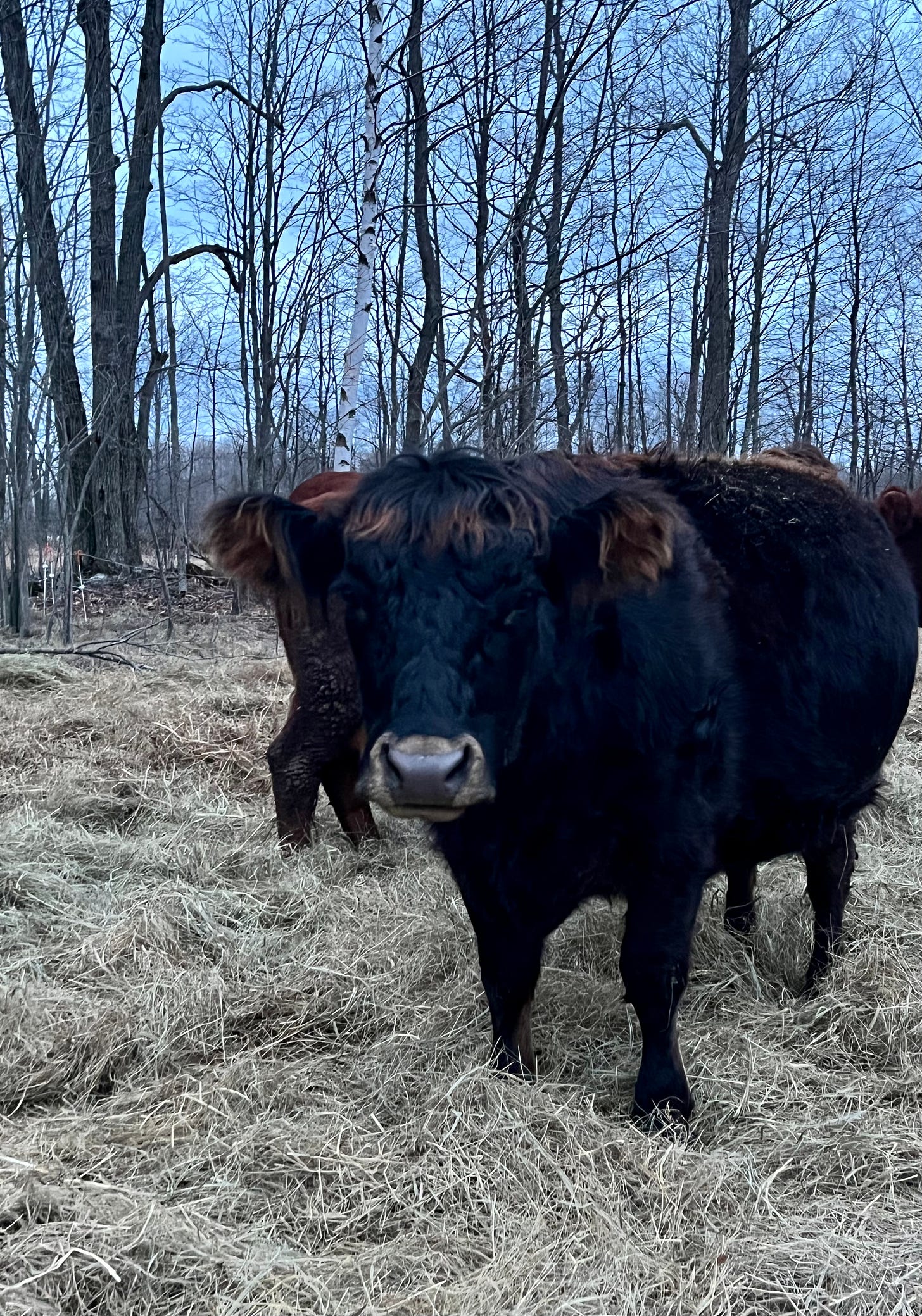Around the farm: Spring is most definitely here. I suspect winter will throw up a spell or two as a way of displaying her might before leaving altogether, but spring’s tenacity serves us all well. She is the regal, purposeful horse pulling summer’s golden chariot. They’re coming, we can hear them.
The ducks and geese who await their move to their summer housing have been taking matters into their own hands. Using their bills like little excavators in the thawing ground, they have created big puddles where once lay grasses. They seem quite pleased with their renovations. I, however, am not. Once we move them out of there, we will fill the holes with compost and reseed. With that, a season of growth and rest, and with all of the poop and plundering the birds have done, that area should be vibrantly bursting in no time. Last year, I had extra poppy seeds that I just randomly scattered there and then forgot about. It was such a beautiful present to go about chores one morning and see poppy flowers of all sorts, popping their heads above the sea of green. It reminded me of the slumbering poppies in the Wizard of Oz, only prettier.
We spent the other morning unrolling last year’s hay across a piece of compacted, sad pasture. Our plans to fence off a post-winter/pre-spring area for the cattle last year didn’t materialise so we are trying something different. An older farmer friend, with a lifetime of experience, told us about how he has worked over the years to bring back marginal land without plowing it up. We have heard different versions of this approach, but one thing you learn from reading books and listening to someone who swears they have the key to life is that what works for one won’t necessarily work for another. So, it’s always nice to talk to the flesh and blood farmer friends who have spent their lives doing things in a locale similar to our own, whose farms are thriving and whose knowledge comes from generations long gone.
So, we unrolled. The people that had our farm before us didn’t have grazing animals on it. We live in a place where the forest chews on the edges of the pastures, hungry to reclaim them. Our concession is leaving the forests alone (they compose about 80% of our land) and to improve the pastures that were badly compacted and depleted from years of taking off hay and never giving back to the soil. We can achieve this with rotational grazing and the spreading of compost, but with our soil type and the level of compaction, we need more. We covered the area in hay while the ground is still frozen, then put the cows in to eat it, poop their poops, and mill about gossiping about their farmers, like they always do, using those mighty hooves like little spades to break the crust of the soil surface. This achieves a few goals: get the cows out of their winter area which is now a slurry of melting poop soup (wet ground can bring hoof problems that I am overly-cautious of), have a dry clean place for calving mothers, and, well, we will see about how things turn out for the pasture. We have been warned that it will look like we made a terrible mistake the first year, but in year two, the magic happens. If it does work, we will use this method throughout the pastures, rotationally, each spring.
New to the farm this year will be sheep. I would like to lower our number of cattle and start diversifying into other ruminants. I have been hand wringing about what type to get. I abhor flighty animals and, well, they’re flighty, them sheep. Aside from that, I need sheep with good feet, good mothering abilities, and a more forest foraging sheep. There are assurances, from some sheep breeders, that their sheep are considered “orchard safe” because they don’t eat shrubs and trees. I need “orchard unsafe”. Still unsure about how we will keep them alive without livestock guardian dogs (not getting), but I’ve heard good things about lamas. That said, this year is for trying them out, not getting breeding stock and starting a whole new endeavour. Come fall, if they don’t work here, we eat them. No loss either way.
We will also be introducing a few new chicken breeds, another milk cow, and bringing back our meat rabbits. I wasn’t happy about getting rid (eating) all of our meat rabbits last year, but our reserves were limited and our farming endeavours had to be dwindled because of all that was going on in our lives. After trying every conceivable living arrangement possible for rabbits over the years, from movable rabbit tractors to colonies, we are going with a permanent hutch design on the back of our wood shed that will have hutches much bigger than the sad little crates you often see rabbits living in. We will remove them every day and put them into electric fence pens so they can hop around and do a little rabbit jig, eating and stretching and using those muscles which make them happy, fit rabbits because happy, fit rabbits always taste better than sedentary sad rabbits.
Lastly, hubs is almost done with the cut line. Come thaw, we have kilometres of fence to put up. Not fun, but necessary.

In other happenings…
Around my kitchen: I’ve been canning and bottling maple sap-semi-un-syrup. Not maple syrup because we don’t really need anymore. I still have twenty bottles from last



